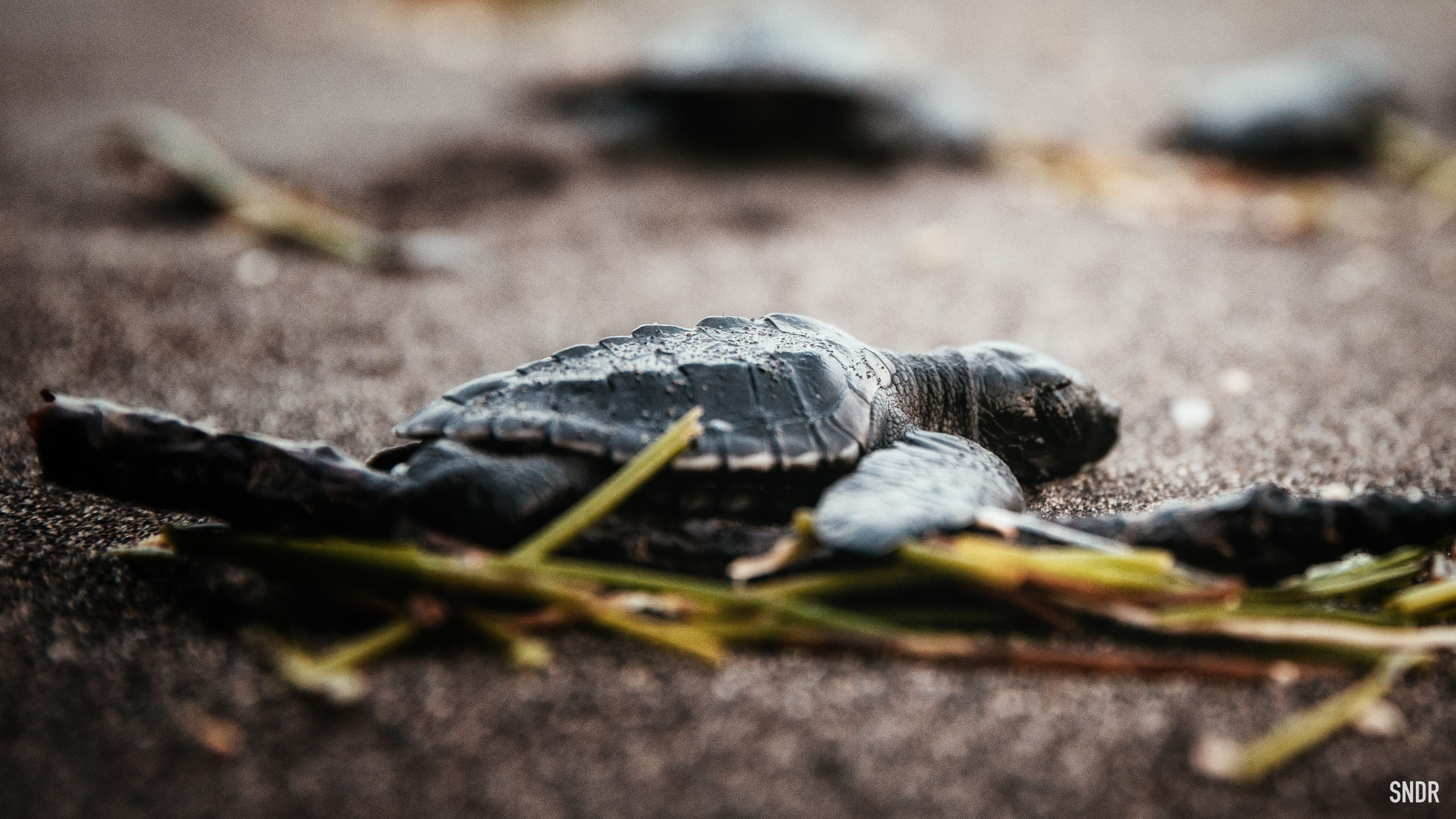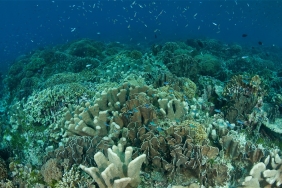A PORTRAIT OF THE PERANCAK COMMUNITY'S CONCERN FOR SEA TURTLE CONSERVATION
"We then wondered why turtles were suddenly so hard to find. Was it because we were overfishing? What should we do?"
That's what I Wayan Tirta, a former turtle hunter from Perancak Village, Bali, was saying about the condition of turtles in the 1960s, when the market demand for turtle meat was so high that it encouraged fishermen to hunt turtles. However, around 1985, the number of turtle catches suddenly dropped dramatically. "I myself began to feel that there was something wrong with the way we, the fishermen, treated the turtles. It was sad to think that the turtles we caught were dying a horrible death, but on the other hand, trading these animals provided a lot of profit," continued the man born in 1944.
In 1997, when WWF-Indonesia implemented a sea turtle conservation project in Perancak, Wayan Tirta and his two younger siblings had an 'epiphany' about the important role sea turtles play in the ecosystem. "After hearing that information, I immediately decided to stop being a turtle hunter," recalls Wayan Tirta. A number of relatives say that Wayan Tirta repented. "He was nicknamed 'weird' because he secured sea turtle eggs, raised hatchlings, and even diligently took sea water to put in reservoirs," said Nyoman Warsa, one of Wayan Tirta's younger siblings.
In the same year, WWF-Indonesia and a number of Perancak residents established the Kurma Asih forum - which in Sanskrit means 'loving turtles' - and appointed Wayan Tirta as chairman. The forum aims to invite a number of Perancak residents to be actively involved in turtle conservation efforts, through participatory mapping, monitoring, patrolling, and even a turtle nest protection donation program.
Wayan Tirta explained, "Although we managed to get a lot of people involved, the process of activities was quite slow. For example, about 50 people were involved in the turtle monitoring and patrolling process. But the number of people involved declined quickly because they were disappointed that the activities did not get paid." To date, Kurma Asih can only maintain 15 members, including Wayan Tirta's two younger siblings.
After 5 years of working together, in 2001, WWF-Indonesia disengaged from Kurma Asih. However, sea turtle conservation efforts in Perancak continued. The donation program for turtle nest protection continues to be promoted by Kurma Asih. Initially using a website as one of the means to attract donors but it did not run smoothly due to lack of funds, even so the donation program continues to run with conventional methods, word of mouth promotion.
"The concept of turtle nest protection donation cannot stop because it is one of the ways for us to increase public awareness of the importance of turtle conservation efforts," said Anom Astika Jaya, one of the active administrators of Kurma Asih. Although not 100% ideal, it is quite effective in attracting the interest of anyone who cares about conservation issues, including visitors to Perancak Beach.
Kurma Asih has made the turtle egg protection donation program part of the tourism program in Perancak. Here, visitors not only make donations, release hatchlings, volunteer to monitor turtle eggs, but also enjoy local culinary and other tourist attractions around Perancak.
To mark the sea turtle nests that have been donated, Kurma Asih's management put a small board with the name of the donor. Furthermore, the donations collected are used by Kurma Asih management for turtle nest protection programs, as well as habitat support factors such as beach cleaning programs carried out regularly by Kurma Asih management and a number of volunteers.
In addition, the donation is also used for operational costs such as electricity, monitoring services, and even transportation reimbursement for visitors who rescue and deliver turtle eggs from outside Perancak.
"The cost of the transportation change that we provide to residents is only equivalent to 1 liter of gasoline, which is around IDR 10,000. This price is still far below the market price if they want to sell the turtle eggs. Although not ideal, this is already an indicator of increased public awareness of the importance of turtle conservation efforts," Anom said.
Since its establishment 18 years ago, Kurma Asih has managed to save 241,246 Olive Ridley sea turtle eggs (Lepidochelys olivaceae), with a donation of around IDR 500,000 (USD 38) per year or IDR 41,000 (USD 3.11) per month. When compared to the price of a cup of coffee at a coffee shop in a big city, the donation figure is indeed smaller. However, have you ever imagined that the benefits obtained are much greater.
The donation program for sea turtle nest protection encouraged by Kurma Asih not only encourages community strengthening in sea turtle and habitat conservation efforts, but also encourages many parties to take action. Not only limited to funds, this donation program also delivers strong environmental education.
Perancak Village is located in Jembrana Regency, Bali, which is one of the most important areas for Hawksbill (Eretmochelys imbricate), Green (Chelonia mydas) and Olive Ridley (Lepidochelys olivaceae) turtles to pass through and lay their eggs. Part of Jembrana Regency itself is included in the scope of the West Bali National Park (TNBB), which has 83.5 kilometers of coastline and mangrove forests and the distribution of coral reefs in the water area reaches up to 868 hectares.
For more information about Kurma Asih turtle conservation donation program, please contact Anom Astika Jaya at +6281338410898.
Author: Indarwati Aminuddin (Marine Tourism Coordinator)





